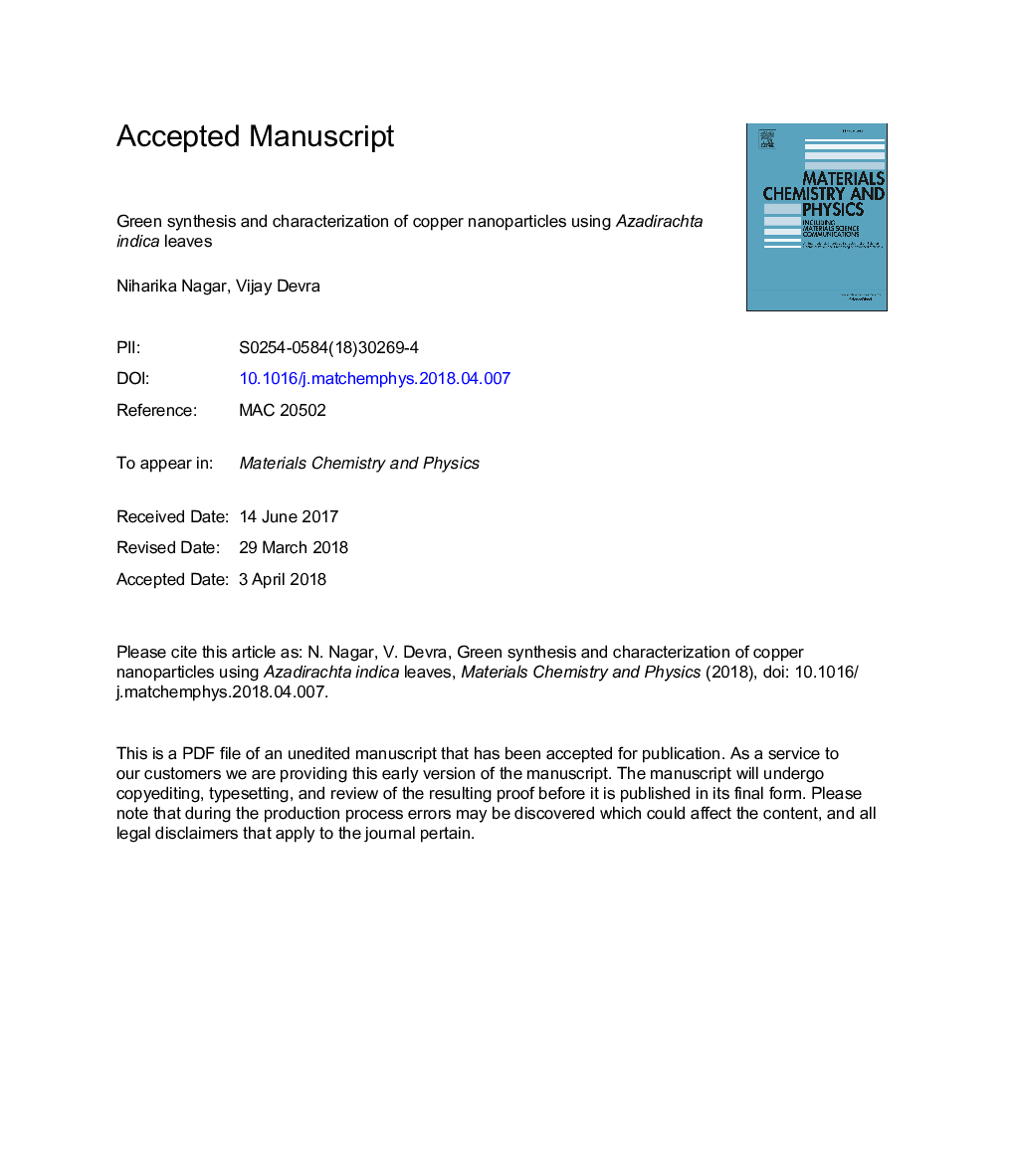| Article ID | Journal | Published Year | Pages | File Type |
|---|---|---|---|---|
| 7921464 | Materials Chemistry and Physics | 2018 | 28 Pages |
Abstract
Development of an eco-friendly process for the synthesis of copper nanoparticles (CuNPs) is an important aspect in the field of nanotechnology. In recent years the utilization of secondary metabolites from plant leaf broth has emerged as a novel technology for the synthesis of various nanoparticles. In this report, copper nanoparticles were synthesized by the leaf broth of Azadirachta indica and effect of different reaction parameters such as precursor salt concentration, leaf broth percentage, temperature and pH of the medium on the conversion rate and morphology of the CuNPs were analyzed. The plant biomolecules induce the reduction of Cu2+ ions to CuNPs and also act as a capping and stabilizing agent. The formation of CuNPs was monitored by absorbance spectra of UV-visible spectrophotometer at different stages during the synthesis process. The biosynthesized CuNPs were characterized by different instrumental techniques and results described the particles are crystalline, cubical shape with the average size 48â¯nm and highly stable. The optimum conditions for synthesis are as follows: percentage of leaf broth 20%, [CuCl2]â¯=â¯7.5â¯Ãâ¯10â3â¯M, pH 6.6 and temperature 85â¯Â°C. The present study could prove to have an enormous impact in the immediate future to synthesize metallic nanoparticles on an industrial scale.
Keywords
Related Topics
Physical Sciences and Engineering
Materials Science
Electronic, Optical and Magnetic Materials
Authors
Niharika Nagar, Vijay Devra,
